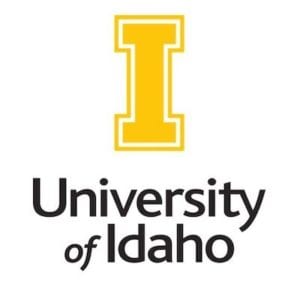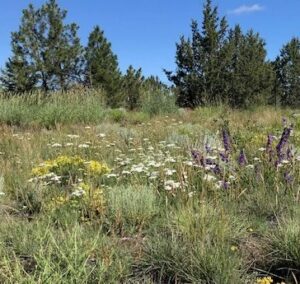Restoration
View the itinerary.
May 22, 2025 the Nevada Native Plant Partnership is hosting a Time Travel Restoration Roadshow around the Reno area. Attendees will travel through time to see a variety of projects that have been implemented in the last 20+ years. Please carpool as much as possible since parking will be limited throughout the tour.
View article.
To assess the effects of seeding on the genetic diversity of wildland populations, we conducted a genetic survey of bluebunch wheatgrass (Pseudoroegneria spicata) populations within the perimeter of a recent megafire in southeastern Oregon and southwestern Idaho, United States. We genotyped 760 samples with 10 polymorphic loci. We found similar genetic diversity in populations four to 5 years after seeding compared to unseeded populations that were either burned or unburned. Furthermore, genetic diversity neither increased nor decreased with distance from the fire’s edge, suggesting that wind dispersal from neighboring remnant populations plays a minor role in immediate post-fire recovery compared to resprouting and germination from the seed bank. Though no change was detected in the short term, this survey of genetic variation after a post-fire seeding provides an empirical baseline that can be used to track changes in genetic diversity of these wildland populations over time.
View article.
Conservationists are increasingly leveraging systematic conservation planning (SCP) to inform restoration actions that enhance biodiversity. However, restoration frequently drives ecological transformations at local scales, potentially resulting in trade-offs among wildlife species and communities. The Conservation Interactions Principle (CIP), coined more than 15 years ago, cautions SCP practitioners regarding the importance of jointly and fully evaluating conservation outcomes across the landscape over long timeframes. However, SCP efforts that guide landscape restoration have inadequately addressed the CIP by failing to tabulate the full value of the current ecological state. The increased application of SCP to inform restoration, reliance on increasingly small areas to sustain at-risk species and ecological communities, ineffective considerations for the changing climate, and increasing numbers of at-risk species, are collectively intensifying the need to consider unintended consequences when prioritizing sites for restoration. Improper incorporation of the CIP in SCP may result in inefficient use of conservation resources through opportunity costs and/or conservation actions that counteract one another. We suggest SCP practitioners can avoid these consequences through a more detailed accounting of the current ecological benefits to better address the CIP when conducting restoration planning. Specifically, forming interdisciplinary teams with expertise in the current and desired ecosystem states at candidate conservation sites; improving data availability; modeling and computational advancements; and applying structured decision-making approaches can all improve the integration of the CIP in SCP efforts. Improved trade-off assessment, spanning multiple ecosystems or states, can facilitate efficient, proactive, and coordinated SCP applications across space and time. In doing so, SCP can effectively guide the siting of restoration actions capable of promoting the full suite of biodiversity in a region.
View factsheet.
In recent years, biochar has become a way to dispose of woody debris from forest activities. A new General Technical Report (GTR) has been published by the Rocky Mountain Research Station covering the eight types of biochar production available to land managers. This product will help increase the use of biochar and provide resources to inform those who are interested in it.
The US Geological Survey Land Management Research Program and the Great Basin Fire Science Exchange teamed up to bring you updates in sagebrush, fire, and wildlife related research. On 3/6/2025, USGS researchers, Matt Rigge, Martin Holdrege, and Shawn O’Neil shared research on vegetation trends and their relationships to climate, invasion, and disturbance, Gregor Siegmund, Alice Stears, Mike Duniway, and Gayle Tyree shared their latest research on planning and predicting succss of restoration treatments, and Will Janousek shared science on elk management. Below are the webinar recording and resources associated with each presentation.
To view a complete list of resources (completed and planned), please view the program for this slate of presentations.
3/6 – Climate, vegetation trends, and big game
Rangeland Condition Monitoring Assessment and Projection (RCMAP) vegetation trend summaries
Project webpage
Multi-Resolution Land Characteristics Consortium
RCMAP fractional component time-series data across western North America (1985-2023)
Integrating climate, sagebrush ecological integrity, and grazing
Project webpage
Observed wildfire frequency, modelled wildfire probability, climate, and fine fuels across the big sagebrush region in the western US
Influence of future climate scenarios on habitat and population dynamics of greater sage-grouse
Project webpage
Understanding and forecasting environmental controls over plant establishment in sagebrush ecosystems to enhance restoration success
Project webpage
Treatment and post-fire assessment tools for management of the sagebrush ecosystem
Project webpage
Science to support elk management efforts to reduce chronic wasting disease (CWD) risk
Project webpage
The US Geological Survey Land Management Research Program and the Great Basin Fire Science Exchange teamed up to bring you updates in sagebrush, fire, and wildlife related research. On 2/6/2025, USGS researchers, Stephen Boyte and Morgan Roche shared their latest research on cheatgrass and fine fuels, Bryan Tarbox and Erica Christensen shared research on restoration treatment effectiveness, and Cam Aldridge and Cara Applestein shared research on monitoring and predictions to help restoration. Below are the webinar recording and resources associated with each presentation.
To view a complete list of resources (completed and planned), please view the program for this slate of presentations.
Individual presentations and associated resources, within the project webpage with links to data and publications:
Develop annual herbaceous percent cover maps in near-real time
Project webpage
Exotic annual data
Proliferation of fine fuels: Assessing under future climatic conditions
Optimizing Sagebrush Restoration project webpage
Proliferations project webpage
Optimizing sagebrush restoration and management actions to increase connectivity within the Sagebrush Conservation Design
Project webpage
Prioritizing Restoration of Sagebrush Ecosystems Tool (PreSET) decision-support tool
Leveraging soil, vegetation, fire, and land treatment data to inform restoration across the sagebrush biome
The Sagebrush Conservation Design
Assessing cheatgrass treatment efficacy across the sagebrush biome
Project webpage
Sagebrush recovery modeling website and associated projects
Sagebrush recovery projections layers
Leveraging soil, vegetation, fire, and land treatment data to inform sagebrush restoration
Simulating trends in land health components under treatment scenarios and Sagebrush Conservation Design
Project webpage
Sagebrush biome-wide vegetation change monitoring and warning system
Project webpage
Vectors of annual grass invasion – Roche et al. Predicting reburn risk to restoration investments
Projects webpage
Who: This training course was developed in concert with Society for Ecological Restoration and BLM’s National Training Center. It is available to restoration practitioners within the DOI and our partners. Target Audience: Natural Resource Specialists, Fire, Fuels, Emergency Stabilization and Rehabilitation, Botanists, Wildlife Biologists, Ecologists, Range, Minerals, Mining and Reclamation
What: This self-paced on-line course is intended to serve as an introduction to seed technology and arid and semi-arid lands restoration as a first step towards more in-depth in person restoration and revegetation courses. It provides world-class training on restoring dry land ecosystems, which are critical resources in tackling the climate crisis. By the end of the course, participants will have an understanding of: Ecological restoration principles, standards of practice, and concepts to increase the success of restoration efforts, arid/semi-arid ecosystems and the challenges they pose to successful restoration, and how to apply ecological restoration best practices and concepts in restoration planning in arid and semi-arid ecosystems.
Where: Request an account here eDOI and search for: Arid and Semi-Arid Lands Seed Technology and Restoration.
The course consists of the following modules/lessons. Each are accessed separately and must be taken in sequential order.
Module 1: Introduction
Module 2: The National Seed Strategy
Module 3: Principles, Standards and Concepts
Lesson 3.1: Principles and Standards for the Practice of Ecological Restoration
Lesson 3.2: Principles, Standards and Concepts – Native Seed Standards
Module 4: Arid and Semi-Arid Systems
Lesson 4.1: Overview of Drylands
Lesson 4.2: Restoration Challenges
Lesson 4.3: Current Knowledge
Module 5: Developing and Implementing a Restoration Plan
Introduction
Lesson 5.1: Project Context
Lesson 5.2: Vision, Goals, and Objectives
Lesson 5.3: Plant Materials Selection and Procurement
Lesson 5.4: Site Preparation
Lesson 5.5: Developing and Implementing Seeding and Planting Strategies
Lesson 5.6: Monitoring and Management
Lesson 5.7: Putting It All Together
Conference website.
The 11th World Conference on Ecological Restoration (SER2025) will be held in person on 30 September – 4 October 2025 in Denver, Colorado, United States. SER’s World Conference is an exciting and inspiring biennial gathering of global experts in restoration, making SER2025 the premier venue for those interested in being active members of the global restoration community.
The call for abstracts opens December 4.
Conference website.
February 24-27, 2025 | Tucson, AZ
Seeds for Change: Seeding the Future Together
The National Native Seed Conference connects Research, Industry, Land Management, and Restoration professionals, providing the premier opportunity to develop relationships and share information about the collection, research and development, production, and use of native plant materials.
The 2025 National Native Seed Conference is dedicated to the science, practice, and policy of producing and effectively using native seed. The conference supports the America the Beautiful Executive Order, National Seed Strategy for Rehabilitation and Restoration, and the UN Decade on Ecosystem Restoration.









